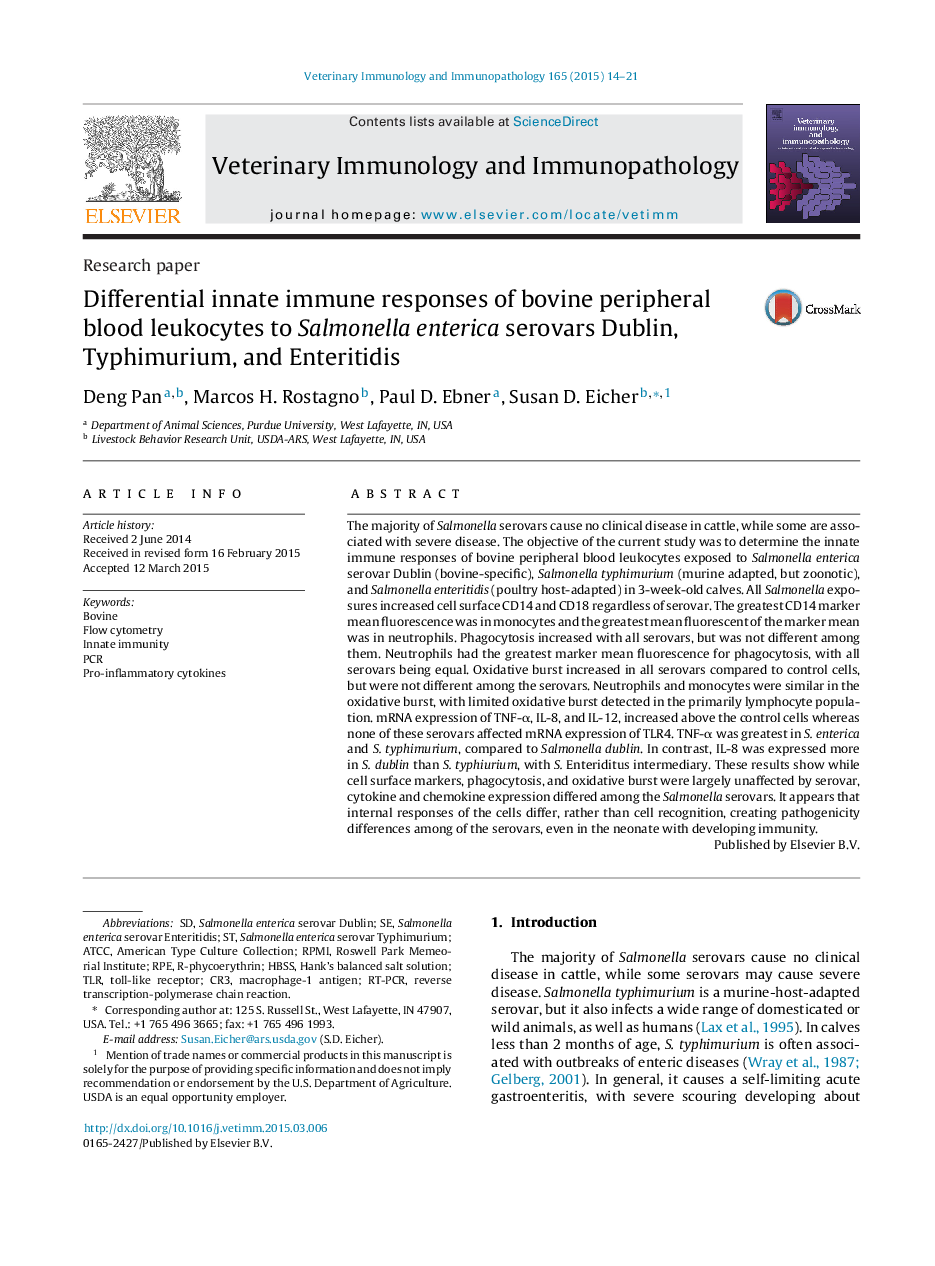| Article ID | Journal | Published Year | Pages | File Type |
|---|---|---|---|---|
| 2461373 | Veterinary Immunology and Immunopathology | 2015 | 8 Pages |
The majority of Salmonella serovars cause no clinical disease in cattle, while some are associated with severe disease. The objective of the current study was to determine the innate immune responses of bovine peripheral blood leukocytes exposed to Salmonella enterica serovar Dublin (bovine-specific), Salmonella typhimurium (murine adapted, but zoonotic), and Salmonella enteritidis (poultry host-adapted) in 3-week-old calves. All Salmonella exposures increased cell surface CD14 and CD18 regardless of serovar. The greatest CD14 marker mean fluorescence was in monocytes and the greatest mean fluorescent of the marker mean was in neutrophils. Phagocytosis increased with all serovars, but was not different among them. Neutrophils had the greatest marker mean fluorescence for phagocytosis, with all serovars being equal. Oxidative burst increased in all serovars compared to control cells, but were not different among the serovars. Neutrophils and monocytes were similar in the oxidative burst, with limited oxidative burst detected in the primarily lymphocyte population. mRNA expression of TNF-α, IL-8, and IL-12, increased above the control cells whereas none of these serovars affected mRNA expression of TLR4. TNF-α was greatest in S. enterica and S. typhimurium, compared to Salmonella dublin. In contrast, IL-8 was expressed more in S. dublin than S. typhiurium, with S. Enteriditus intermediary. These results show while cell surface markers, phagocytosis, and oxidative burst were largely unaffected by serovar, cytokine and chemokine expression differed among the Salmonella serovars. It appears that internal responses of the cells differ, rather than cell recognition, creating pathogenicity differences among of the serovars, even in the neonate with developing immunity.
